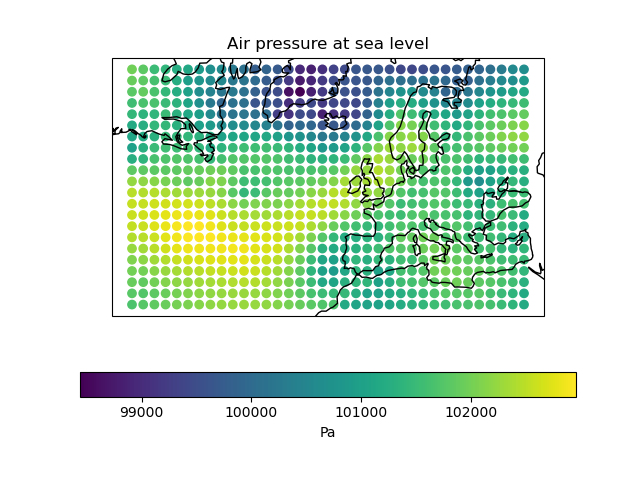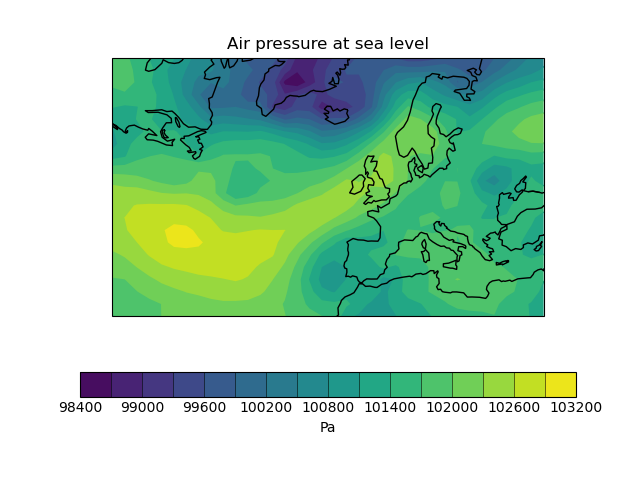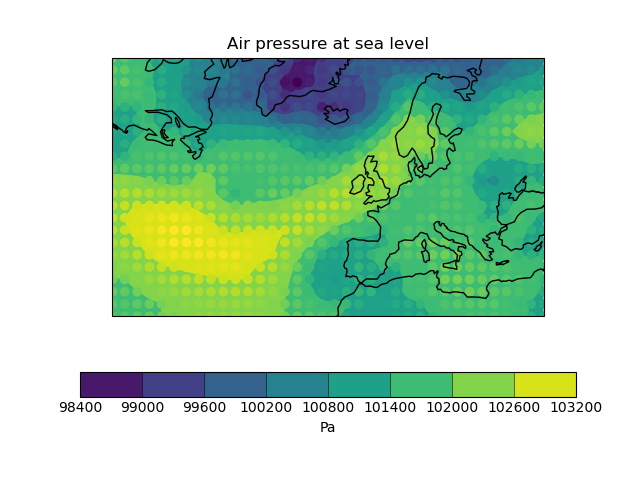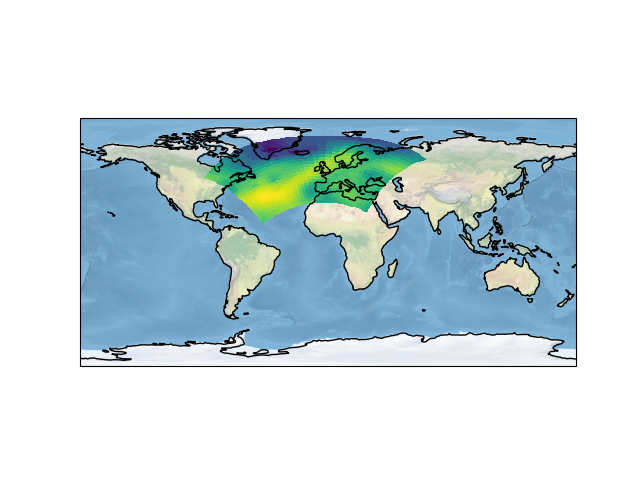Note
Go to the end to download the full example code
Rotated Pole Mapping#
This example uses several visualisation methods to achieve an array of differing images, including:
Visualisation of point based data
Contouring of point based data
Block plot of contiguous bounded data
Non native projection and a Natural Earth shaded relief image underlay
import cartopy.crs as ccrs
import matplotlib.pyplot as plt
import iris
import iris.analysis.cartography
import iris.plot as iplt
import iris.quickplot as qplt
def main():
# Load some test data.
fname = iris.sample_data_path("rotated_pole.nc")
air_pressure = iris.load_cube(fname)
# Plot #1: Point plot showing data values & a colorbar
plt.figure()
points = qplt.points(air_pressure, c=air_pressure.data)
cb = plt.colorbar(points, orientation="horizontal")
cb.set_label(air_pressure.units)
plt.gca().coastlines()
iplt.show()
# Plot #2: Contourf of the point based data
plt.figure()
qplt.contourf(air_pressure, 15)
plt.gca().coastlines()
iplt.show()
# Plot #3: Contourf overlaid by coloured point data
plt.figure()
qplt.contourf(air_pressure)
iplt.points(air_pressure, c=air_pressure.data)
plt.gca().coastlines()
iplt.show()
# For the purposes of this example, add some bounds to the latitude
# and longitude
air_pressure.coord("grid_latitude").guess_bounds()
air_pressure.coord("grid_longitude").guess_bounds()
# Plot #4: Block plot
plt.figure()
plt.axes(projection=ccrs.PlateCarree())
iplt.pcolormesh(air_pressure)
plt.gca().stock_img()
plt.gca().coastlines()
iplt.show()
if __name__ == "__main__":
main()
Total running time of the script: (0 minutes 0.608 seconds)
-3.10.0.dev18-gold?style=flat)



